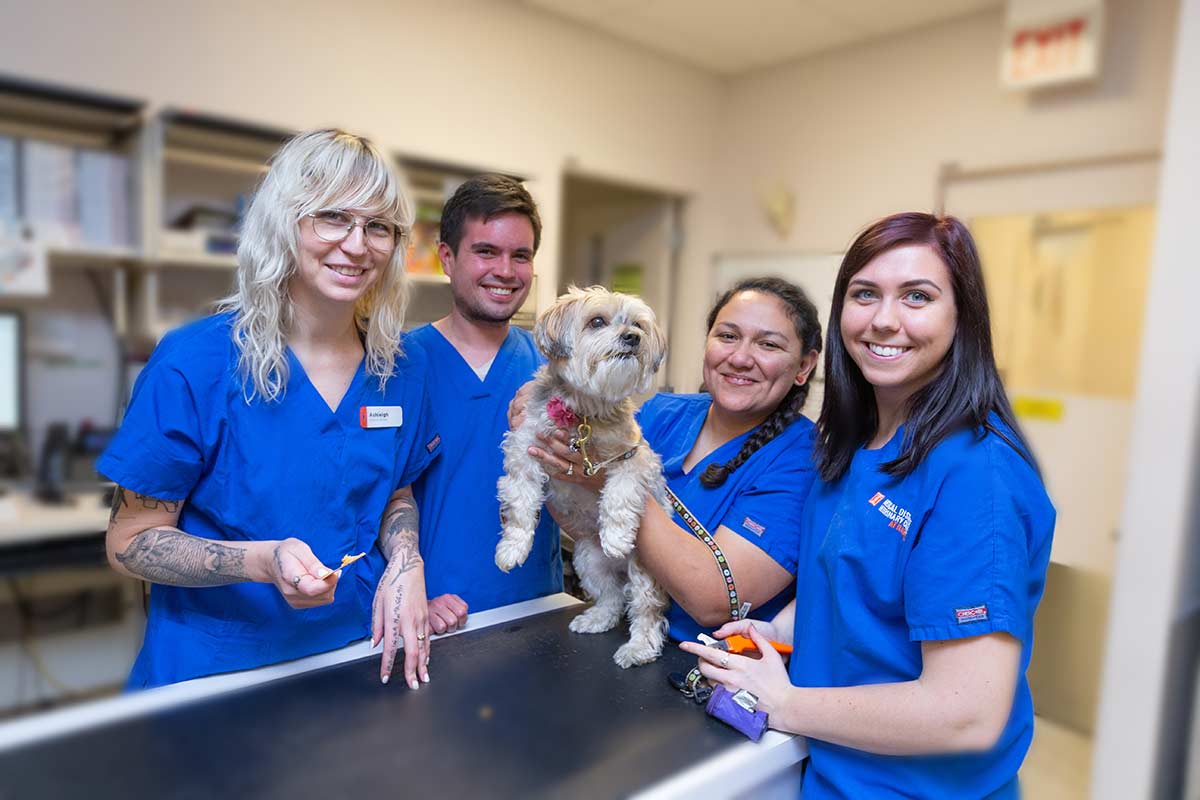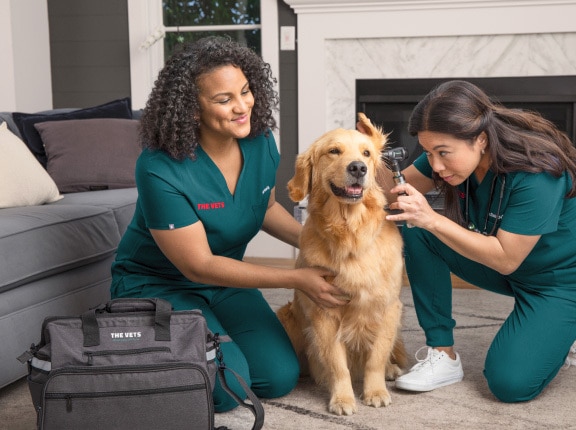What Makes canine tplo surgery a Game-Changer for Active Dogs
What Makes canine tplo surgery a Game-Changer for Active Dogs
Blog Article
All About Veterinarian Surgical Treatment: Comprehending the Significance of Professional Look After Your Family pets
Vet surgical treatment is a vital part of family pet health care. It includes numerous procedures, from routine elective surgeries to urgent interventions. Understanding the intricacies of these surgical procedures can assist pet proprietors make educated choices. The prep work, execution, and recovery phases are necessary for making certain the health of animals. With proper knowledge, proprietors can browse the intricacies of vet care. What variables should be thought about prior to a pet goes through surgery?
Sorts Of Veterinarian Surgeries
When an animal calls for medical intervention, recognizing the various kinds of vet surgical treatments can aid pet dog proprietors make educated choices. Vet surgical treatments can be broadly categorized into 3 major kinds: elective, immediate, and emergency surgical treatments. Elective surgical procedures, such as spaying or neutering, are intended procedures that are not right away serious. Urgent surgical treatments, like those for foreign body elimination, have to be executed quickly but are not serious in the minute. Emergency situation surgical treatments, such as those attending to severe trauma or inner bleeding, are critical and call for instant attention.Additionally, surgical procedures can differ in complexity, varying from minimally intrusive laparoscopic procedures to much more extensive open surgical treatments. Each type of surgery brings its own dangers and healing procedures. Recognizing these categories enables pet owners to take part in significant conversations with veterinarians, resulting in better outcomes for their beloved animals.
Getting ready for Your Animal's Surgery
Getting ready for an animal's surgical treatment includes a detailed checklist to ensure all essentials are covered. Effective interaction with the vet is essential for recognizing the treatment and any required pre-operative steps - emergency vet bellingham. Furthermore, having clear post-operative care instructions will help proprietors supply the most effective support for their recuperating family pets
Pre-Surgery List Basics
Guaranteeing a smooth medical experience for an animal calls for careful prep work and interest to information. A pre-surgery checklist is essential for family pet proprietors to comply with. Initially, confirming the scheduled surgical treatment date and time is crucial. Owners need to likewise verify that their pet dog has actually fasted according to the veterinarian's guidelines, normally for 8-12 hours before surgical procedure. Gathering required clinical records, including inoculation background, is essential for the vet's review. It is likewise a good idea to prepare a comfortable area at home for the pet dog's recuperation after surgical procedure. Proprietors should have a strategy for transportation to and from the vet center, making sure that the family pet is safe and secure and comfortable throughout the journey. Complying with these steps can substantially enhance the medical experience.
Connecting With Your Veterinarian

Reliable interaction with the veterinarian is necessary for an effective surgical experience for animals. Owners ought to be prepared to review their family pet's medical history, consisting of any kind of pre-existing conditions, drugs, and allergic reactions. This details helps the vet analyze risks and tailor the surgical strategy accordingly. Additionally, animal owners must ask inquiries relating to the treatment, anesthetic, and expected results to guarantee they totally recognize the procedure. Clearing up any type of doubts can reduce anxiety for both the pet dog and the owner. It is also important to connect any kind of behavioral adjustments or problems observed in the pet dog leading up to the surgery. Eventually, clear discussion cultivates count on and partnership, guaranteeing that family pets receive the ideal possible treatment throughout their medical trip.
Post-Operative Treatment Instructions
After talking about the operation with the veterinarian, pet dog owners should focus on post-operative care guidelines to facilitate a smooth recovery for their animals. These instructions generally include monitoring the medical website for indications of infection, such as redness or discharge. Family pets may require to be maintained tranquil and constrained to prevent extreme movement that might interfere with healing. Discomfort management is essential, so owners should follow the vet's guidance on providing medicines. Furthermore, nutritional limitations may be advised to prevent intestinal distress. Regular follow-up consultations are very important to guarantee correct healing and address any kind of worries. By sticking to these post-operative treatment instructions, pet dog proprietors can significantly contribute to their animal's healing and total wellness.
The Surgical Process Explained
The surgery for family pets includes essential steps that ensure their safety and security and recuperation. Pre-surgery preparations are important for lessening threats, while post-operative treatment standards play an important function in promoting healing. Recognizing these elements assists family pet proprietors browse the surgical experience much more successfully.
Pre-Surgery Preparations
Before a family pet undertakes surgical procedure, a number of crucial prep work must take location to ensure a secure and effective treatment. A detailed veterinary evaluation is important to assess the family pet's general health and wellness and identify any potential risks. This might include blood examinations, imaging, or various other diagnostics. The vet will also go over anesthetic options customized to the pet dog's particular needs. Additionally, family pet proprietors are usually advised to withhold food and water for a specified time before surgical treatment to decrease the danger of problems during anesthetic. It is essential for proprietors to provide a full case history, including any kind of medications or allergic reactions, making sure the surgical group has all essential information. Appropriate interaction and adherence to pre-surgery guidelines can significantly improve the outcome of the treatment.
Post-Operative Treatment Guidelines
Appropriate post-operative care is crucial for ensuring an animal's recuperation complying with surgery. After the procedure, pets should be kept an eye on closely for any kind of indicators of problems, such as too much bleeding, swelling, or unusual actions. It is necessary to comply with the vet's guidelines concerning drugs, consisting of painkiller and anti-biotics. Family pets need to be kept in a quiet, comfortable atmosphere to reduce tension and promote healing. Limiting task is essential; short, leashed walks may be necessary, yet leaping or running ought to be avoided. Routine follow-up consultations need to be scheduled to evaluate the healing process. Furthermore, the surgical website should be kept clean and completely dry, with any kind of indications of infection reported to a vet promptly. Abiding by these standards his explanation improves healing end results.
Anesthetic and Discomfort Monitoring
Efficient anesthetic and discomfort administration are important elements of vet surgery, making sure that pet dogs continue to be comfy and safe throughout the procedure. Veterinarians evaluate each family pet's individual needs, thinking about variables such as age, weight, health and wellness status, and the kind of surgical treatment being performed.Anesthesia methods usually include a mix of pre-anesthetic medications, induction agents, and inhalant anesthetics, permitting exact control over the animal's degree of awareness. Surveillance throughout surgical procedure is essential; veterinarians continuously observe vital indications to deal with any kind of possible difficulties promptly.Pain monitoring methods might include opioids, non-steroidal anti-inflammatory drugs (NSAIDs), and neighborhood anesthetics, customized to the pet's details circumstance. This complex approach assists minimize discomfort and advertises a smoother medical experience. By prioritizing efficient anesthetic and pain administration, veterinary professionals improve the general welfare of animals going through operations, ensuring they receive the highest requirement of treatment.
Post-Operative Treatment and Recuperation
Adhering to surgical procedure, the focus moves to post-operative care and recuperation, which is important for making certain an animal's secure return to typical activities. Throughout this period, pets need a peaceful, comfy environment to help recovery. Proprietors should carefully monitor their family pets for any kind of indications of pain or unusual behavior.Veterinary guidelines usually consist of specific instructions related to medicine administration, wound care, and nutritional adjustments. It is essential to adhere i was reading this to these recommendations to lessen issues and advertise healing. Family pets may need to be limited from vigorous activities, such as running or leaping, throughout their recuperation period (tplo surgery for dogs).Regular follow-up appointments with the veterinarian enable tracking of the pet dog's progression and timely modifications to the care plan. Supplying emotional support and companionship can additionally boost a family pet's recuperation experience, assisting to minimize tension and anxiousness. Generally, thorough post-operative treatment plays a substantial duty in achieving a successful recovery
Recognizing Complications After Surgery
Exactly how can animal owners recognize difficulties after surgery? Recognition of details signs is necessary for making sure the health of animals during recuperation. Typical indications consist of excessive swelling, inflammation, or discharge at the surgical website, which may symbolize infection. Furthermore, consistent pain, indicated by yawping or hesitation to move, need to motivate instant focus. Adjustments in hunger or water consumption can additionally suggest issues; a decline in these actions may signal discomfort or distress.Moreover, pet dog proprietors ought to check their animals for any uncommon habits, such as sleepiness or trouble breathing, as these can be indicators of major concerns. Throwing up or looseness of the bowels following surgical treatment may call for immediate vet assessment. Acknowledging these problems early can greatly affect an animal's recuperation process, emphasizing the value of vigilance and prompt communication with a vet for any type of worrying signs and symptoms.
The Role of Veterinary Professionals in Surgical Treatment
Vet experts play a crucial role in ensuring the safety and success of surgeries for pet dogs, specifically following surgery when keeping an eye on and care are extremely important. These experts include vets, vet professionals, and assistance team, all of whom add specialized abilities to the surgical process.Before surgical treatment, vets carry out thorough evaluations to examine the pet's health, making certain that any kind of underlying problems are managed. During the treatment, the medical group offers anesthetic, keeps clean and sterile settings, and keeps an eye on crucial indications, very important for decreasing risks.Post-operative treatment is equally considerable; veterinary experts observe for difficulties, manage pain, and guide owners on recuperation techniques. Their experience allows them to identify early indicators of distress or infection, guaranteeing timely treatment. Ultimately, the collective efforts of vet professionals in medical care cultivate a risk-free atmosphere, promoting the check my reference health of animals throughout the surgical journey.

Regularly Asked Inquiries
Exactly how Do I Pick the Right Vet Specialist for My Family pet?
Choosing the ideal vet specialist involves investigating credentials, checking out evaluations, and examining the facility's environment. It is important to assess the cosmetic surgeon's experience with specific procedures and their interaction design when choosing.
What Prevail Misconceptions About Veterinarian Surgeries?
Typical mistaken beliefs concerning vet surgeries include ideas that they are constantly dangerous, unneeded, or only for emergency situations. Several family pet owners ignore the benefits of preventative treatments and the ability involved in veterinary medical treatment.
How Much Will My Pet dog's Surgical procedure Expense?
The expense of a family pet's surgical treatment can differ substantially based on elements such as the kind of treatment, the vet's experience, and geographic location (animal emergency care bellingham). Typically, expenses vary from a couple of hundred to several thousand dollars

Can My Family Pet Eat Before Surgery?
Before surgery, it is typically recommended that animals abstain from eating for a particular period. This fasting helps in reducing the threat of complications throughout anesthetic. Proprietors ought to consult their vet for exact directions customized to their pet dog's needs.
What if My Pet Has Pre-Existing Wellness Conditions?
When a pet has pre-existing health and wellness conditions, it's crucial for the veterinarian to evaluate these variables before surgical treatment. This assessment warranties suitable safety measures are taken, reducing threats and optimizing the family pet's overall security during the treatment.
Report this page